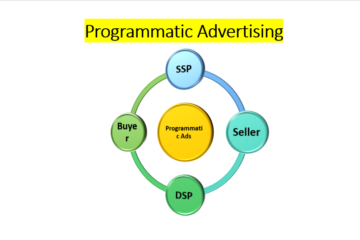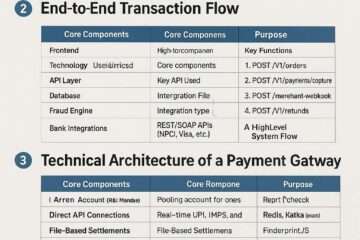

Google has initiated the process of gradually eliminating third-party cookies. Initially, Tracking Protection will be implemented for 1% of Chrome users, with plans to extend it to all users by Q3 2024. This change is crucial for marketers as it restricts traditional targeting and tracking strategies that heavily rely on third-party cookies. Marketing professionals need to prioritize leveraging first-party data, embracing emerging technologies and platforms for precise targeting, and expanding their marketing strategies.
Google is starting to phase out third-party cookies. Here’s what you should know about this update.
Google has achieved a significant milestone. Starting on January 4, 2024, Google introduced a new feature called Tracking Protection to a small percentage of Chrome users worldwide. This feature automatically limits third-party cookies.
After much anticipation and careful planning, the industry is now implementing a gradual rollout, as it prepares for the inevitable decline of third-party cookies. Industry analysts anticipate a full elimination of tracking by the conclusion of this year, as Google sets its sights on extending Tracking Protection to all Chrome users by Q3 2024.
Why This is Important for Marketers
This pivotal moment of the impending phase-out of third-party cookies holds immense significance for marketers, and allow me to explain why:
Revamping Targeting Strategies:
Marketers have long relied on third-party cookies to develop precise advertising campaigns that cater to users’ browsing habits across various websites. This change will greatly restrict the conventional methods of tracking and targeting. As marketing professionals, it is crucial to adapt our targeting strategies to align with evolving privacy regulations, all while ensuring we effectively engage with our target audience.
Importance of First Party Data
With the decline of third-party cookies, the importance of first-party data, which is information collected directly from your customers and audience, becomes crucial. This shift will necessitate marketers to allocate more resources towards direct customer engagement channels, such as email marketing, loyalty programs, and customer feedback platforms, in order to gather valuable insights.
Embracing New Technologies and Platforms:
The decline of third-party cookies is expected to speed up the adoption of innovative technologies and platforms for tracking and targeting. These encompass unified ID solutions, contextual advertising, and advancements in AI and machine learning for predictive analytics. Keeping up with these technologies and knowing how to incorporate them into your marketing strategy will be crucial.
Embracing Diversification of Marketing Strategies:
In today’s ever-changing landscape, it is crucial to embrace a diverse targeting strategy, experiment with various approaches, and minimize dependence on any one solution. There is no universal solution to the challenge of replacing third-party cookies.
Google’s decision to phase out third-party cookies is driving a major shift in the world of digital marketing.
Google’s decision to phase out third-party cookies is driving a major shift in the world of digital marketing. As a marketing coordinator, it is crucial to stay ahead of the curve and be proactive in adapting to these ever-changing trends. It is important to prioritize building direct relationships with customers, while also respecting their privacy.
Additionally, embracing new technologies and channels for reaching audiences is key to staying relevant in the industry. This transition brings forth a range of challenges and opportunities to think creatively and reshape the future of digital marketing.
Google is lagging behind in this game.
Despite the fact that a considerable portion of the web already blocks third-party cookies by default in Safari and Firefox, brands and agencies have not shown a significant inclination towards adopting cookieless solutions. Google’s 1% might not be the catalyst that the industry needs.
This change has a minimal impact on a small portion of browsers. It is crucial for the industry to step up its efforts in testing cookieless solutions, particularly for Chrome, as it remains largely unaffected. This presents a chance to gather valuable insights into the effectiveness of post-cookie strategies.
Gaining Insight into Cookies and Their Function
Alright, it seems that third-party cookies are on their way out. Are all cookies at risk of being eliminated? Let’s take a step back. In order to gain a comprehensive understanding of the implications of the third-party cookie phase-out, it is essential to have a thorough grasp of the various types of cookies and their significance in the realm of digital advertising.
There is a distinction between different types of cookies. They come in different types and serve different purposes. Although cookies are all pieces of code saved by websites onto a user’s web browser, their purposes vary greatly, including tracking, personalization, and session management. The third-party cookie, which tracks users across different websites, has recently come under scrutiny due to privacy concerns.
Understanding the Function of Third-Party Cookies
Third-party cookies are set by domains that a user doesn’t directly visit. This happens when a publisher incorporates additional elements into their website, such as advertisements, chatbots, or social plugins.
After third-party cookies are installed, they diligently track users and securely store their valuable information. This data is utilized for behavioral advertising, targeted advertising, and measurement purposes. For example, when a blogger includes a YouTube link in a blog post and a reader clicks on it, a cookie from YouTube will be stored in the user’s browser. This YouTube cookie has the ability to track the user until it expires.
Google is gradually eliminating third-party cookies to enhance user privacy and security on the web, while also providing support to publishers. However, there are some who remain skeptical about this decision.
What Other Functions Do Cookies Serve
Various types of cookies serve different purposes, including first-party cookies, session cookies, persistent cookies, and secure cookies.
first-party cookies-Websites typically set first-party cookies when a user visits them. First-party cookies are used to gather data for various purposes, including tracking page views, user counts, and session durations. This data can be shared by publishers with agencies or advertisers for ad targeting. Analytics tools utilize first-party cookies to analyze user behavior and present the data in a visual or organized format for the publisher’s comprehension.
Secure Cookies-Secure cookies are cookies that have encrypted data and can only be set by websites that use HTTPS. In general, e-commerce websites employ secure cookies on payment and checkout pages to enhance the safety of transactions. In addition, secure cookies are utilized by online banking websites to enhance security measures.
Persistent Cookies-Persistent cookies have the ability to stay on a user’s web browser for an extended period of time. Publishers have the ability to utilize these cookies in order to monitor a user’s activity and engagement on the website. As an illustration, a web browser retains cookies even after a user logs into Gmail, closes the tab, restarts their device, turns it back on, reopens the browser, and visits their Gmail account to find that they are still logged in.
Session Cookies-Session cookies have a short lifespan, typically expiring immediately or within a few seconds after the user closes their web browser. E-commerce websites utilize session cookies to maintain a user’s login status, retain information about products in the cart, and track user sessions for analytical purposes. Without the use of session cookies, e-commerce websites would not be able to retain items added to a cart until the user reaches the checkout page.
The Shift Towards Third-Party Cookies
Major browsers such as Safari, Firefox, and Google Chrome have taken steps to limit or remove third-party cookies. Both Safari and Firefox have already implemented default blocking for them. Google Chrome, with its substantial global market share, is now joining the trend, signifying a significant change in online advertising and data tracking methods.
Implications for Businesses and Advertisers
If your marketing strategy heavily relies on targeted advertising using third-party cookies, it may be worth considering a different approach. It is essential to ensure that your websites and advertising strategies are well-prepared for a future without cookies.
The Importance of First-Party Cookies and Other Options
In the ever-evolving digital landscape, the impending demise of third-party cookies has prompted a surge in the importance of first-party cookies and alternative solutions. Grasping these changes is essential for businesses and advertisers to stay ahead in a fast-changing online landscape.
Exploring the Concept of First-Party Cookies
First-party cookies are set by the domain that the user is visiting directly. They have a crucial role in improving user experience, which includes:
Personalization: Customizing website content to suit the unique preferences of each user.
Analytics: Offering website owners valuable insights into user behavior on their site.
User Authentication: Facilitating persistent login for users on frequently visited websites.
First-party cookies are typically considered less intrusive compared to third-party cookies since they are confined to the domain that generates them. Consequently, they are better received in terms of consumer privacy expectations.
New Options to Replace Third-Party Cookies
Amidst the changing landscape of online tracking, various alternatives are emerging to bridge the gap, striking a balance between user privacy and the effectiveness of advertising and analytics.
Introducing Google’s Privacy Sandbox:
A groundbreaking initiative aimed at developing open standards to bolster privacy on the web. As part of this initiative, we have developed two key technologies. The first is the Topics API, which categorizes browsing history into broad interest categories while maintaining user privacy. The second is the Privacy Budget API, which gives users control over how their data is accessed for advertising purposes. Although previous concepts are no longer being actively developed, the Sandbox is constantly exploring new approaches to strike a balance between privacy and online functionality.
Universal IDs:
Universal ID generate distinct identifiers for users using their first-party data. These IDs are utilized across various websites, facilitating focused advertising without relying on third-party cookies.
Contextual Advertising:
There is a growing trend towards contextual advertising, where ads are placed based on the content of the website or webpage, rather than the behavior of the user. This approach prioritizes user privacy while also enabling precise advertising.
Companies are placing a growing emphasis on the collection and utilization of first-party data, which is obtained directly from customers with their consent. This data is extremely valuable for enhancing personalized marketing strategies and enhancing customer experiences.
This concept signifies a change in how publishers leverage first-party data. Publishers collect data from their own websites, including user interactions, clicks, and preferences, in order to develop distinct audience segments.
These customized groups are then directly offered to advertisers, allowing publishers to play a more prominent role in the advertising ecosystem. Unlike traditional methods of audience targeting, seller-defined audiences are created using direct insights from site visitors, providing advertisers with a more nuanced and effective approach.
Privacy-Enhancing Technologies (PETs) or Data Collaboration solutions:
These technologies empower the utilization of data while safeguarding individual privacy. Data clean rooms are a popular type of PET that has been generating a lot of buzz in the industry. These tools provide a safe and regulated environment where multiple companies or divisions can collaborate and analyze data together. Data collaboration platforms, offer a range of advantages. They bring together the benefits of data clean rooms and enhance them with advanced features like integrating various data sources, providing access to advanced analytics, and enabling the activation of insights across multiple channels.



























































